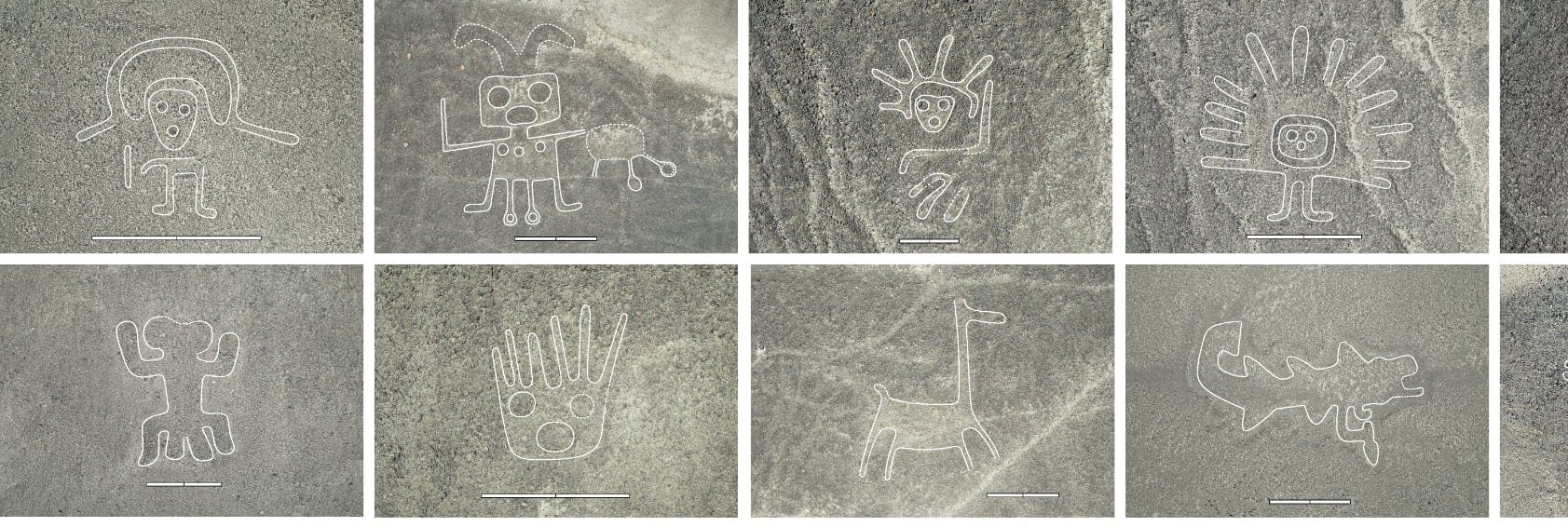Cant be bothered to read?
Stay up-to-date with our podcast!
@sophie-pochtler
AI Uncovers 303 New Geoglyphs Near the Nazca Lines: A Breakthrough in Ancient Mysteries
If you’re fascinated by ancient civilizations and how modern technology can help us unravel their secrets, then you’re going to love this: archaeologists have just used artificial intelligence (AI) to uncover 303 new geoglyphs near Peru’s famous Nazca Lines. That’s right—these newly discovered figures, depicting everything from parrots and monkeys to decapitated heads, nearly double the number of known geoglyphs in the area.
What makes this discovery even more exciting? The technology behind it. AI and drones are revolutionizing how we explore the ancient world, allowing archaeologists to make incredible finds faster and more accurately than ever before. So, let’s dive into what this discovery means and how AI is changing the game.
A Closer Look at the Discovery
For decades, researchers have been captivated by the Nazca Lines—those massive, mysterious shapes carved into the desert more than 2,000 years ago. But with the help of AI, a team from Japan’s University of Yamagata, working alongside IBM Research, has just found hundreds of new geoglyphs that we never knew existed.
These geoglyphs are smaller than the famous Nazca figures like the hummingbird and monkey, and they date all the way back to 200 BCE, meaning they belong to the earlier Paracas culture. This discovery helps fill in the historical puzzle, giving us a clearer picture of how the Paracas eventually transitioned into the Nazca civilization.
How AI and Drones Are Transforming Archaeology
Here’s where the technology part gets exciting. Typically, finding geoglyphs in the desert would take years—if not decades—of painstaking manual work. But now, with AI and low-flying drones, archaeologists can cover huge areas of land in a matter of days. The drones capture high-resolution images, and AI analyzes those images to spot patterns that would be almost impossible to detect with the naked eye.
In fact, the researchers say that it used to take nearly 100 years to discover 430 geoglyphs using traditional methods. With AI? It took just six months to discover 303 new ones. Talk about a game-changer!
What Do the New Geoglyphs Show?

So, what exactly do these newly discovered geoglyphs depict? Well, they’re pretty diverse. You’ve got animals like parrots, cats, monkeys, and even killer whales. But things get a little more intense when you come across images of humans holding decapitated heads—a nod to the head-hunting practices of ancient Peruvian cultures.
Unlike the massive figures made by the Nazca civilization, these smaller geoglyphs seem to show scenes from everyday life. According to Johny Isla, Peru’s chief archaeologist for the Nazca Lines, these figures were likely “made by humans for humans,” suggesting they may have been territorial markers or family symbols, rather than grand offerings to the gods.
It’s fascinating to think that these geoglyphs, which were probably part of daily life for ancient people, were hidden right under our noses for thousands of years!
Why This Discovery Matters
So, why is this discovery such a big deal? For one, it adds to our understanding of the Paracas and Nazca cultures, helping us piece together how their artistic and cultural expressions evolved over time. But it also highlights how AI and drone technology are transforming archaeology. We’re now able to explore vast areas that would have been nearly impossible to survey in the past.
These tools are letting us uncover ancient secrets at a much faster rate, meaning we’re on the verge of even more exciting discoveries. And if AI can help us find 303 new geoglyphs in just a few months, who knows what other hidden treasures we’ll uncover next?
Looking Forward: What’s Next for AI in Archaeology?
This breakthrough in Peru is just the beginning. As AI and drone technology become more advanced, we can expect more discoveries—not just in Peru, but across the globe. From deserts to jungles, AI is helping us unlock the mysteries of ancient civilizations faster than ever before.
For now, the discovery of these new geoglyphs is a reminder of just how much history is still waiting to be uncovered. And as we continue to combine modern technology with traditional fieldwork, the possibilities for what we might find next are endless.




